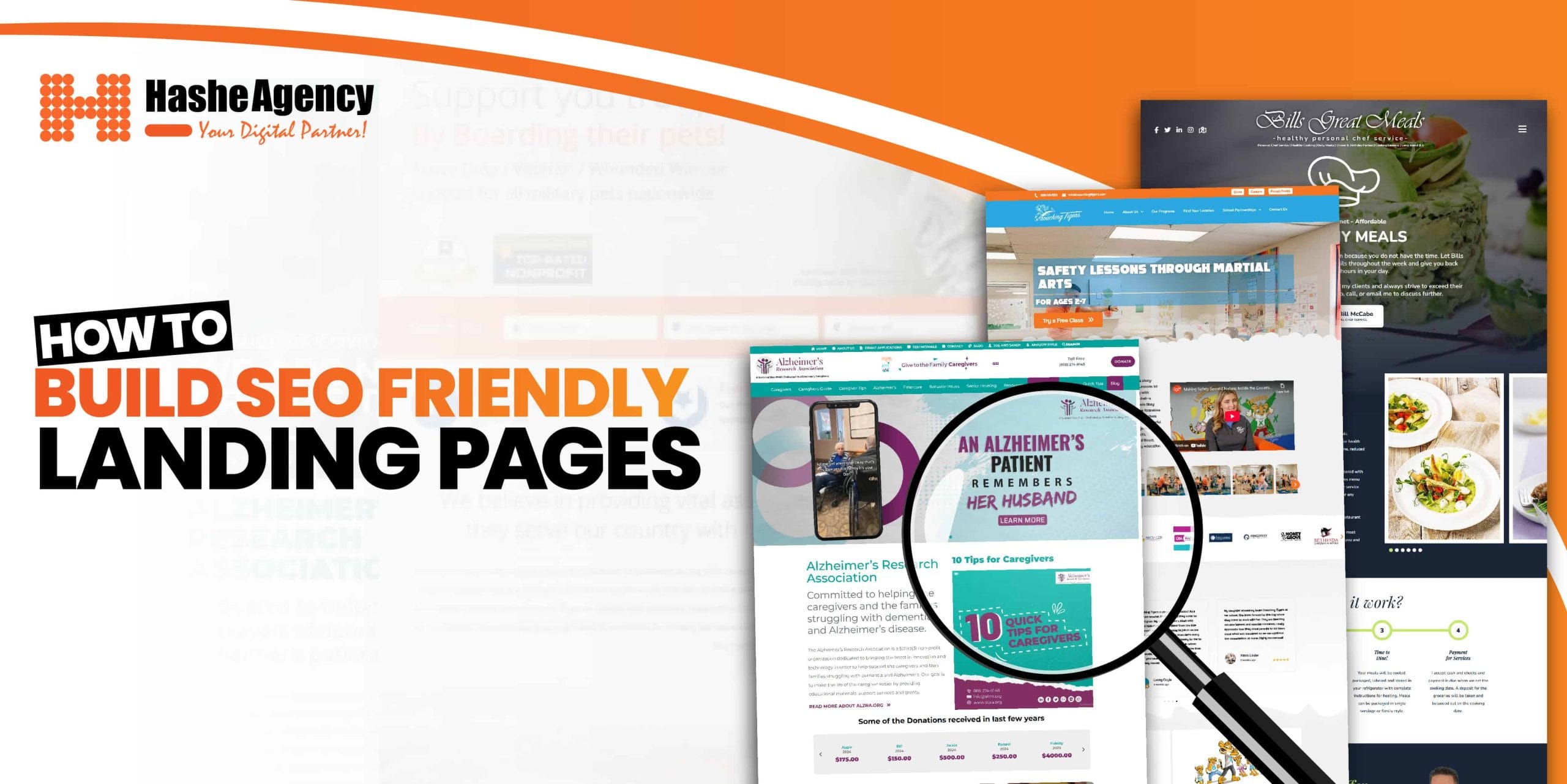Landing pages are your website’s runway, and your visitors land to explore your offer. The right content in a landing page can convert those visitors into customers and leads.
SEO landing pages can also help you generate organic traffic while driving sales. However, SEO strategies for landing pages differ from what you would use for blog websites or posts.
However, if you want to explore landing page seo, this blog is for you. In this blog, you’ll get to know what an SEO landing page is and how to build one.
So, let’s get started!
What is an SEO landing page?
SEO landing pages are website pages designed to persuade visitors to take specific actions, such as signing up for a newsletter or making a purchase, while simultaneously performing well in search engine results.
These pages are optimized for particular keywords, delivering valuable and relevant content to users who discover them through organic searches. Landing pages streamline the user experience by focusing on a call-to-action (CTA), unlike regular web pages, while simplifying the path for users to take the desired action.
How to create an SEO-focused landing page?
Creating landing pages for seo isn’t magic—it’s a method. Here are the key steps that can help you build pages that both real people and Google love.
Step 1: In-depth keyword research
A solid SEO strategy starts with comprehensive keyword research. Identify high-traffic, relevant keywords that align with the intent of your landing page and resonate with your target audience.
After that, you need to integrate these target keywords into various elements of your landing page, such as subheadings, headings, image ALT text, and body text, while making sure it’s still readable.
Step 2: Draft high-quality content
Your landing page should include the key selling points and a crisp call to action. This is an established best practice for conversion-focused landing pages.
Moreover, repeating the call to action as you scroll down and using a simple vertical design can add more value for the reader. Additionally, consider incorporating multimedia elements such as videos, images, infographics, and charts to enhance the user experience and effectively convey information.
Step 3: Optimize the on-page SEO elements
Next, you’ll want to optimize your page title, URL, meta description, subheadings/ headings, and image alt text for your target keywords.
When it comes to your URL, ensure to make it descriptive, concise, and relevant to the page’s content. Avoid special characters or excessive parameters and use hyphens to separate words. Additionally, adding target keywords to the URL can improve search engine visibility.
Step 4: Make sure the page is mobile-friendly
Search engines understand when your page looks bad on phones, and that’s a deal-breaker.
Therefore, it is critical to make your landing pages mobile-friendly by making everything readable, images should fit the screen, and buttons should be big enough to tap. However, if you spot any issues, fix them before your rankings take a hit.
Step 5: Optimize the page to load quickly
Google does not like a slow page because page speed is like a first impression. A slow page sends visitors back to the search results.
Here’s what moves the needle:
- Resize your images before uploading
- Remove any additional features you don’t need
- Select a good hosting company
- Keep your design clean and simple
Step 6: Add internal links to your landing page
Every internal link helps visitors and search engines find their destination. The more roads that lead to your landing page, the more significant it seems to the search engines.
Here’s what works:
- Link from high-traffic blog posts where it is relevant
- Add your landing page to the navigation menus
- Include it in your related content sections or resource lists
- Add a link from your homepage
However, remember to keep it all-natural, not just for SEO. After all, if humans can’t get your logic, search engines will struggle too.
Step 7: Build (relevant) backlinks from other websites
Quality backlinks are like votes and authority vouches from other websites. Therefore, create content that is helpful so that other sites want to link to it. Write guest posts for industry blogs, share your page with people who might find it useful, or have relevant conversations online.
The more interesting and useful the content, the more likely you are to boost your rankings and attract backlinks. Moreover, make use of link-building strategies, just like you would for any product page and blog post.
Step 8: Test, test, test, then test some more
When you keep improving landing pages, they perform better. Analyze which search query brings in the best visitors, watch your organic traffic numbers, and then A/B test different images, headlines, and layouts. Small changes can make a big difference in your search engine result pages. Fix what doesn’t work, keep what works, and never stop testing.
Conclusion
In conclusion, SEO for landing pages helps get the right eyes on your site while driving sales and increasing conversion. We have summarized these SEO tips to provide a basic starter guide for an SEO landing page.
However, if you need further assistance, experts at the Hashe agency can help. We help to create SEO-friendly websites for our clients. So, what are you waiting for? Reach out to us for more information.





